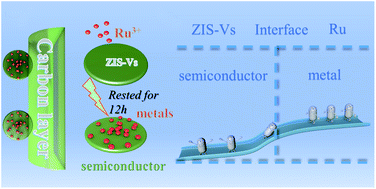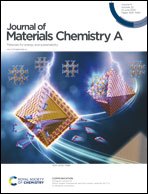Tuning the electronic band structure of Mott–Schottky heterojunctions modified with surface sulfur vacancy achieves an oxygen electrode with high catalytic activity for lithium–oxygen batteries†
Abstract
The regulation of the electronic band structure of electrocatalysts is crucial to intrinsically reshaping their electrocatalytic activity, and thus manipulating the kinetics of the oxygen redox reactions in lithium–oxygen (Li–O2) batteries. Herein, a new type of surface sulfur-vacancy (Vs)-modified Ru/ZnIn2S4 (Ru-ZIS-Vs) Mott–Schottky heterojunction is elaborately proposed as an electrocatalyst. The sulfur vacancy enables the exposure of the interface defects of ZnIn2S4, leading it to bridge well with the doped Ru to build a metal/semiconductor interface of a typical Mott–Schottky catalyst. This change is confirmed to activate the surface and enhance the catalytic activity of ZnIn2S4. In addition, by combining the surface sulfur vacancies with the fabricated Mott–Schottky heterostructure, the electronic structure and the energy band position of the Ru-ZIS-Vs catalyst can be effectively regulated, further driving rapid electron transfer. As a proof of concept, the Ru-ZIS-Vs-catalyzed Li–O2 battery exhibited an excellent discharge capacity of 3532 mA h g−1 at a current density of 500 mA g−1 with reduced overpotentials (0.39 V during discharging and 0.38 V during charging), and enhanced cycling life (321 cycles). This proposed strategy of constructing a heterojunction with the surface defect modification is expected to be an effective way to synergistically boost the performance of the Li–O2 batteries.



 Please wait while we load your content...
Please wait while we load your content...